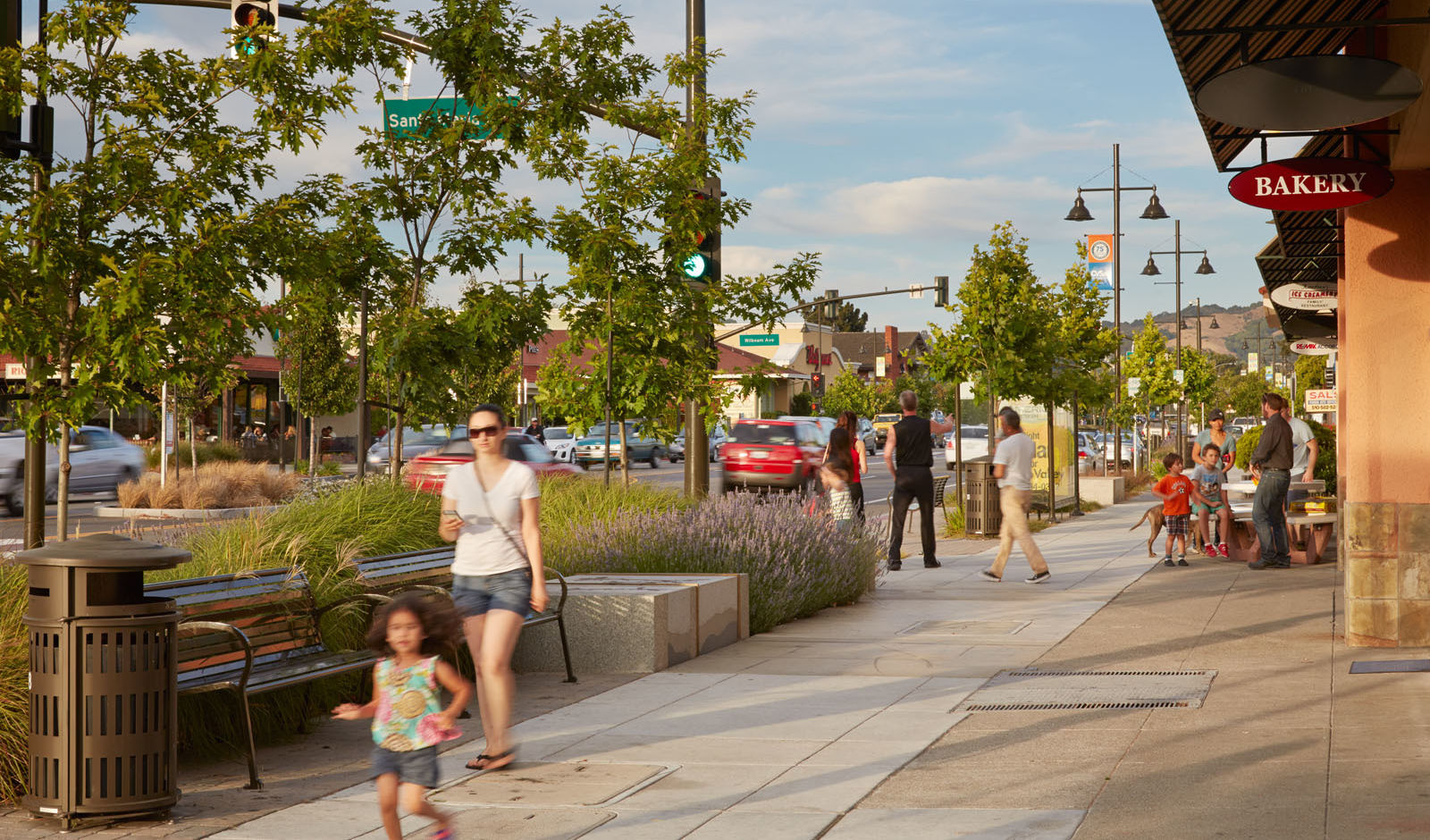Castro Valley Redevelopment Strategic Plan + Implementation
WRT led a multi-disciplinary team to prepare Castro Valley’s Redevelopment Strategic Plan. The Plan aims to revitalize the Central Business District by (1) retrofitting the strip commercial development patterns that were established along the corridor when it was a State Highway, and (2) transforming the 1.7-mile Castro Valley Boulevard – a wide, automobile-dominated thoroughfare – into a safe and inviting retail main street, while still accommodating necessary traffic volumes. The Plan provides development concepts for several key sites that can serve as catalysts for future development. Additionally, the Plan identifies strategic public investments that can be made to the public realm that will promote increased private investment in the area.
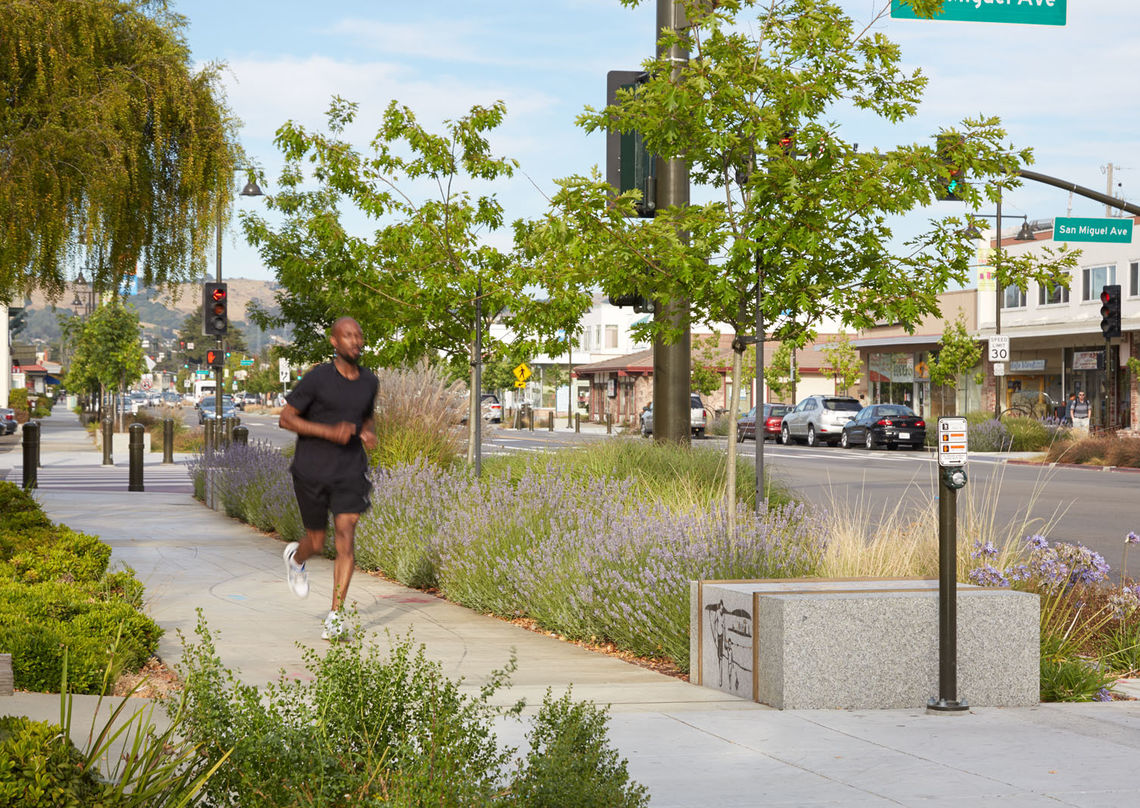
Castro Valley

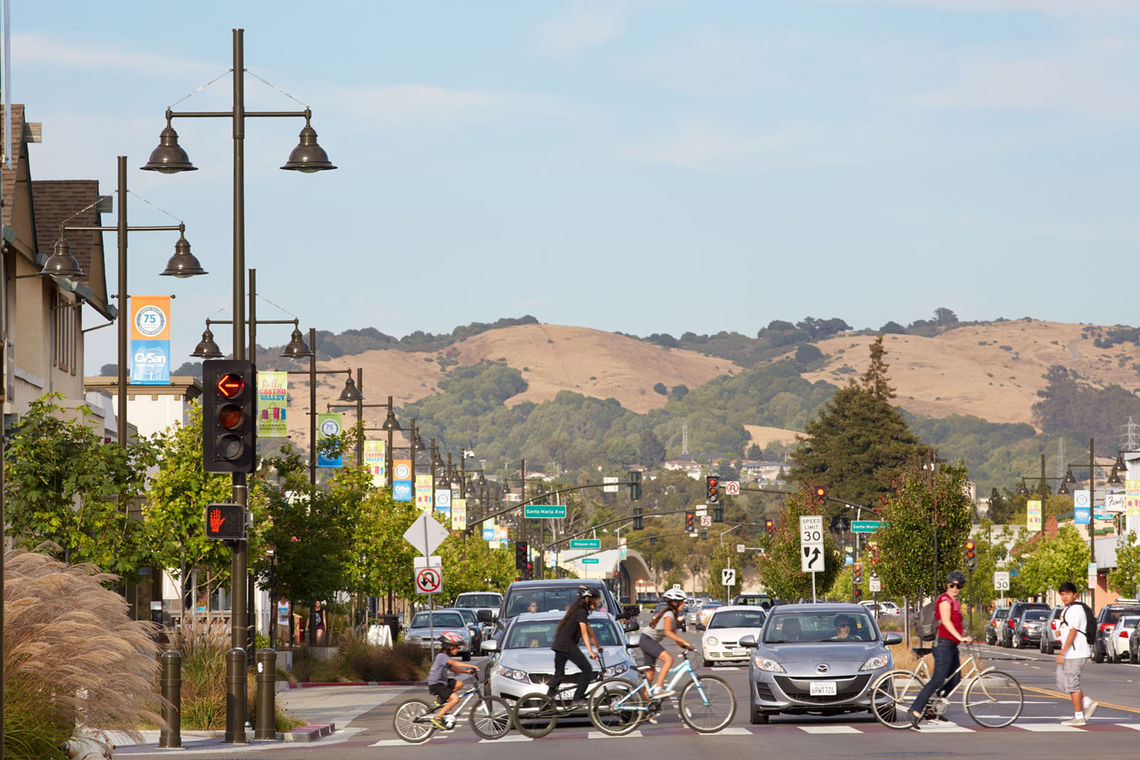
The subsequent redesign of the Castro Valley Boulevard was the first step in implementing the Plan and jump-starting parallel initiatives to encourage new commercial uses, centralize public parking, and strengthen the district’s “walkability” and “bikeability.” WRT’s design for Castro Valley Boulevard combines pedestrian enhancements such as street trees, bulb-outs and pedestrian-scaled lights, with highly-crafted public art elements. Bicycle lanes are well marked with colored asphalt to further highlight the non-vehicular roadway functions, and permeable paving and rain gardens are incorporated to capture and filter stormwater runoff.
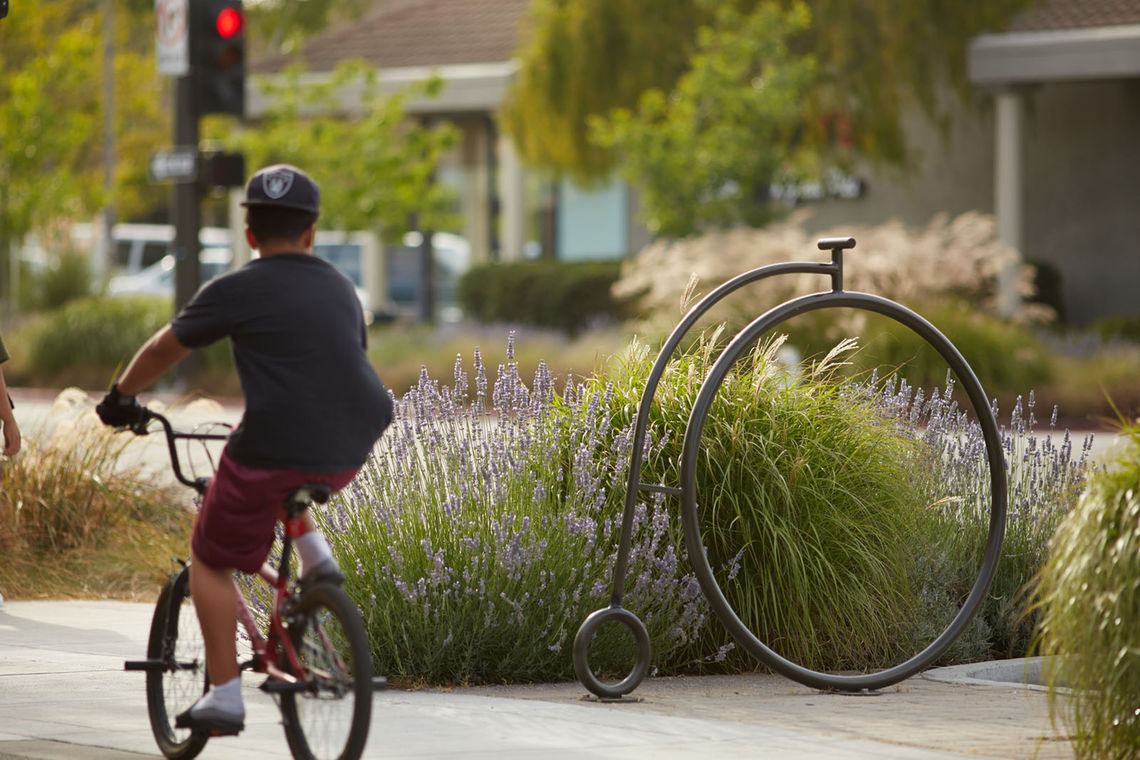
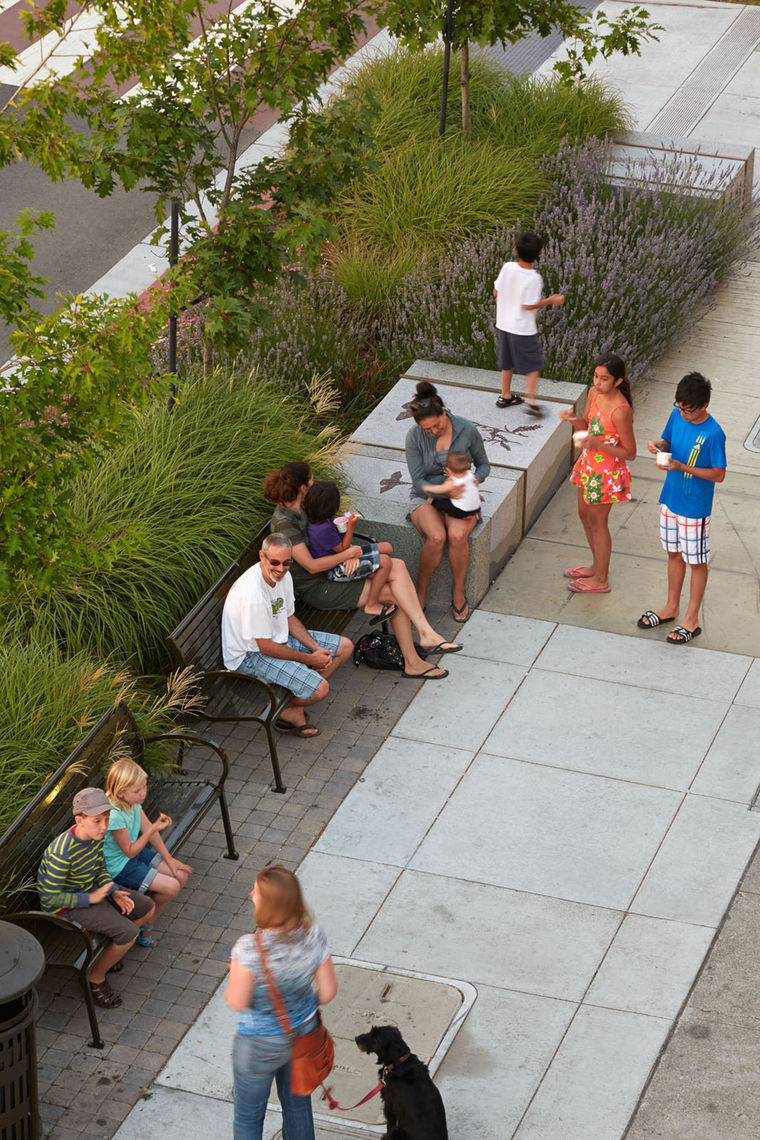
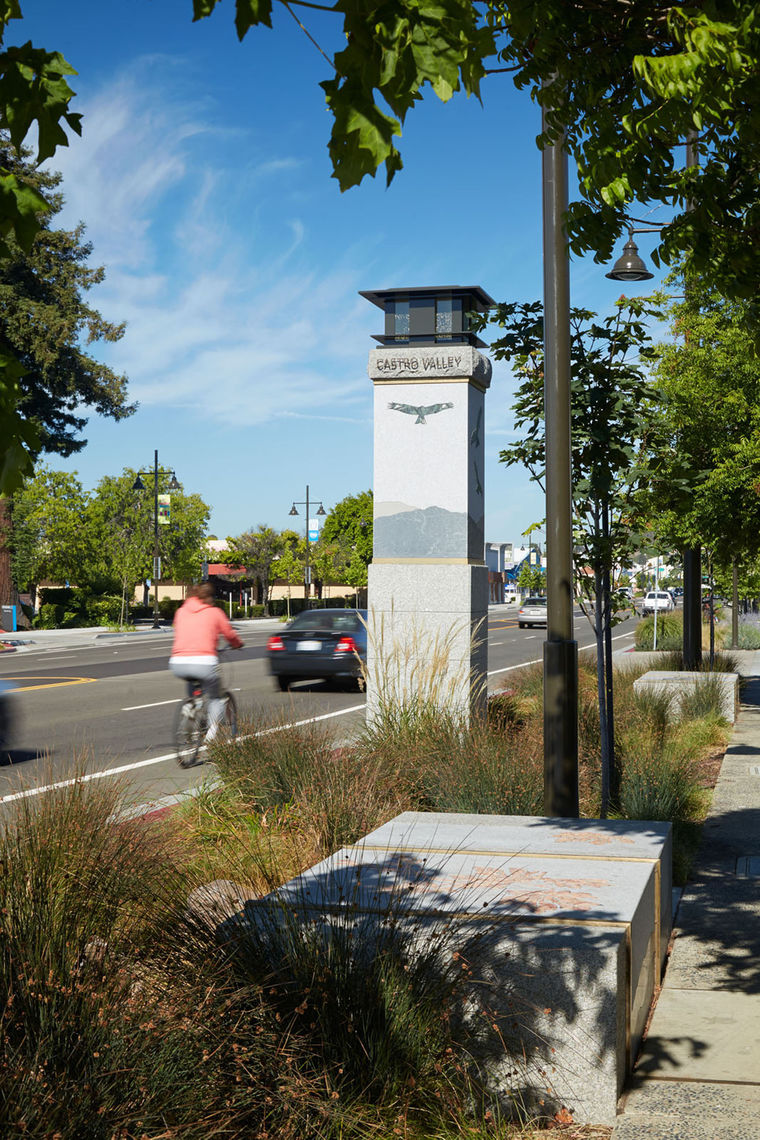
Travel and parking lane widths are sized to facilitate the safe flow of cars, while calming travel speeds and respecting other modes of travel.
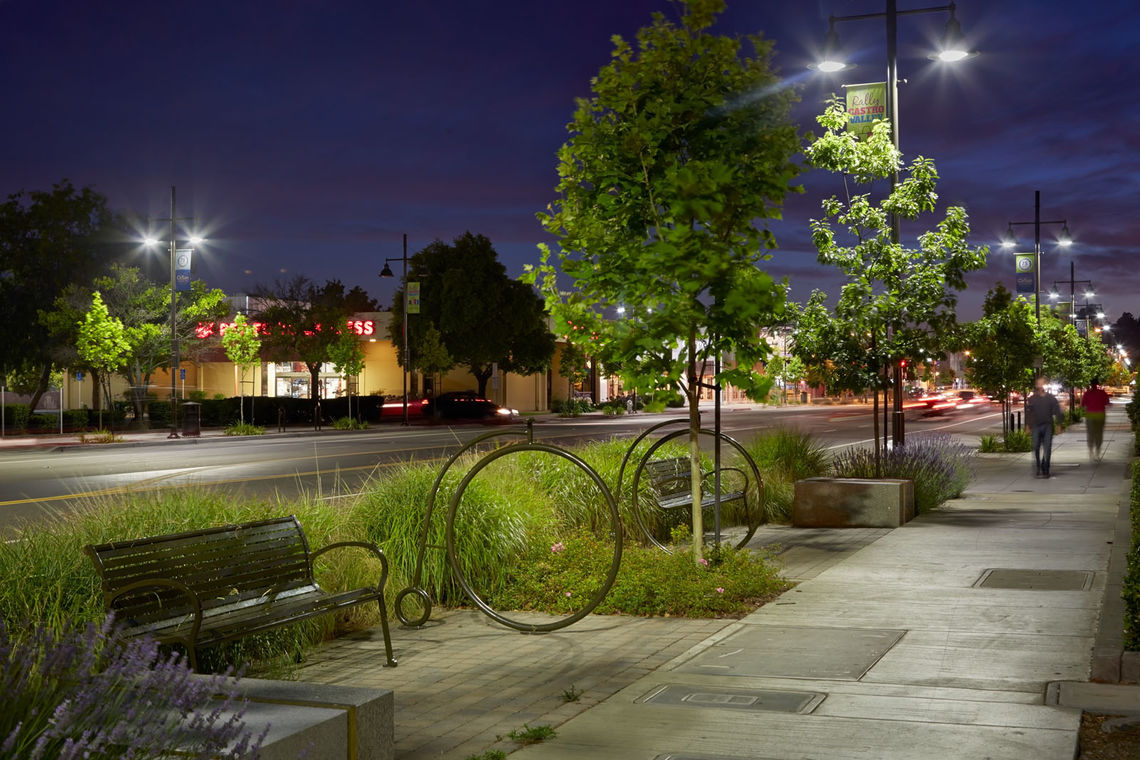
WRT’s design, informed by extensive community engagement, combines pedestrian enhancements such as bulb-outs and pedestrian-scaled lights, with highly crafted elements that convey the community’s unique identity. Travel and parking lane widths are sized to facilitate safe flow of cars, to calm traffic, and to be in balance with other modes of travel. Bicycle lanes are well marked with colored asphalt to further highlight the non-vehicular roadway functions. WRT creatively employed sustainable measures such as capturing and filtering storm water to prevent erosion of nearby creeks and pollutants from entering the bay.
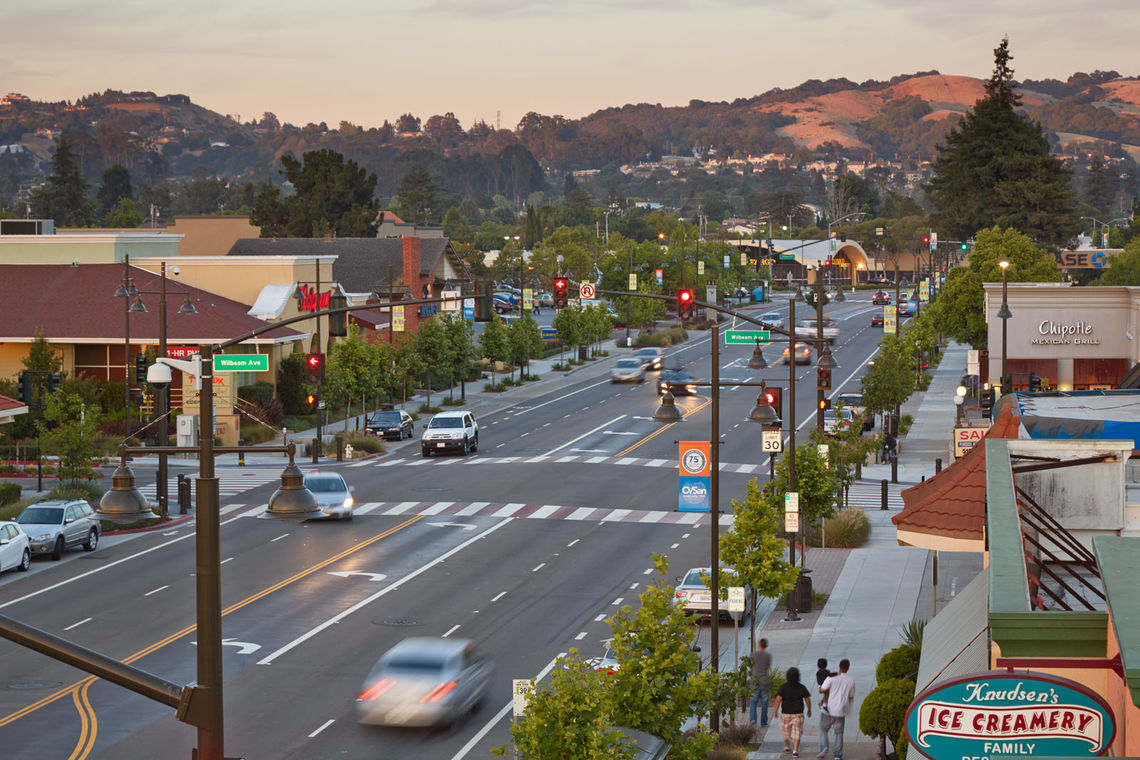
Related Projects
Working alongside communities, we shape aspirational yet implementable plans ranging in scale from neighborhood, corridor, and district plans, to regional and citywide plans, to park and resiliency master plans.
